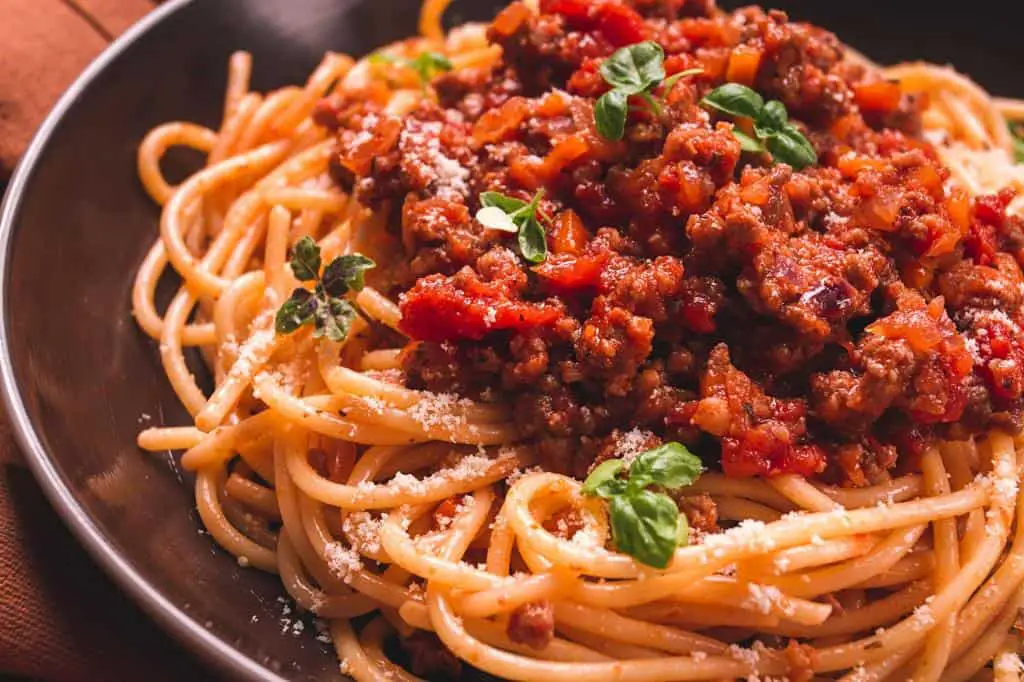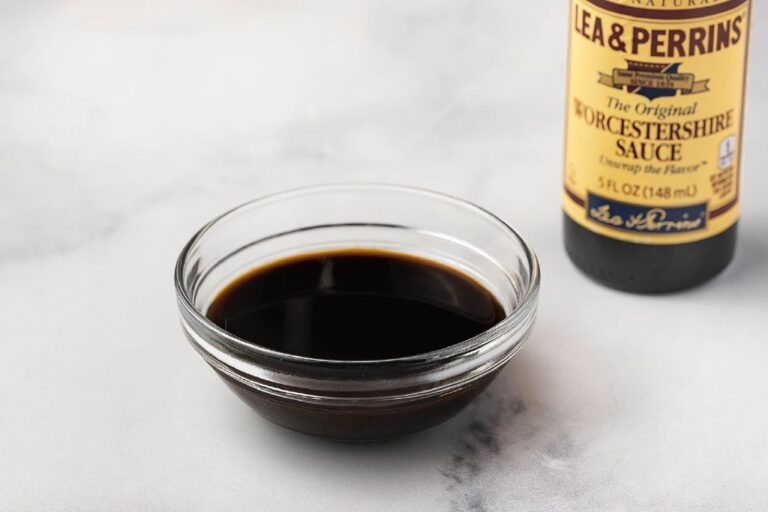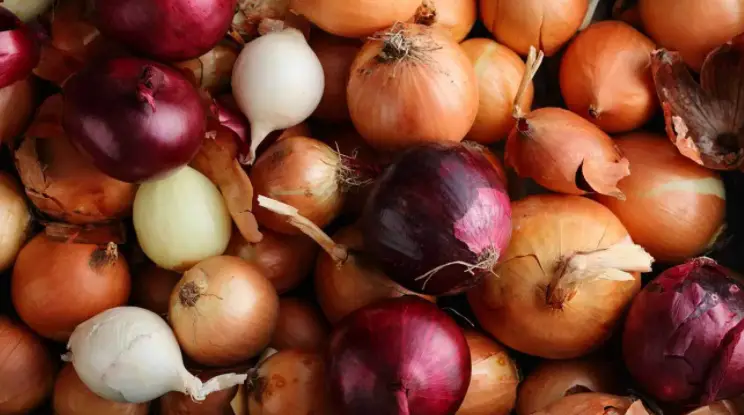A Guide on How to Reduce Acidity in Your Bolognese Sauce

Bolognese sauce, with its rich and meaty goodness, has become a staple in many homes. This sauce originated in the city of Bologna in northern Italy. It is prized for its complex flavors and thick texture. The sauce clings lovingly to every strand of pasta. However, despite following tried-and-true recipes or experimenting endlessly in the kitchen, achieving the perfect balance of flavors can sometimes be challenging.
One common hurdle that many home cooks face when preparing their Bolognese sauce is dealing with excessive acidity. The sharp tanginess of tomatoes can occasionally overpower other ingredients. This can throw off the harmonious blend of flavors. But fear not! In this guide, we will explore practical techniques and tips. They will help you effortlessly reduce acidity and bring newfound harmony to your beloved Bolognese sauce.
Reducing acidity isn’t just about toning down a sour taste. It’s about creating a well-balanced flavor profile that enhances each individual component of your dish. By taming the acidic notes without sacrificing authenticity or overwhelming the palate with sweetness, you’ll unlock new dimensions in your Bolognese recipe that are sure to impress family and friends at every mealtime gathering.
Understanding Acidity in Bolognese Sauce

Acidity is a vital component when it comes to achieving well-balanced flavors in cooking. It provides the necessary tanginess and brightness that can elevate the overall taste of a dish.
Excessive acidity can overpower other flavors. This leaves an unpleasant sharpness on the palate. This is especially true when it comes to Bolognese sauce, where the richness and depth of flavor rely on harmonious balance.
Below are some causes your Bolognese sauce becomes too acidic:
- 1. Tomato Troubles:
- Over-reliance on High-Acidity Tomatoes: Some heirloom tomato varieties have excessive acidity. This can upset the flavor balance.
- Imbalanced Tomato Products: Relying too heavily on tomato paste without considering its concentrated acidity can contribute to the sauce becoming overly tart.
- 2. Wine and Vinegar Overload:
- Heavy-Handed Wine Usage: While red wine enhances flavor, excessive amounts of wine can tip the acidity scale. Moderation is key.
- Vinegar Varieties: Introducing too much red wine vinegar or balsamic vinegar without careful measurement can overpower the sauce.
- 3. Cooking Time and Heat:
- Rapid Reduction: Cooking the sauce at high temperatures with rapid reduction can concentrate acidity. Slow and steady wins the flavor race.
- Extended Cooking Period: While simmering is essential, an overly extended cooking time without proper balancing can intensify acidity.
How to Reduce Acidity in Your Bolognese Sauce
1. Adjusting Acidic Ingredients
When it comes to reducing acidity in your Bolognese sauce, the first step is to examine the ingredients you are using. Tomatoes, being a key component of this sauce, can contribute to its acidic taste. But fear not! There are several ways you can adjust the acidity levels.
Firstly, consider choosing less acidic varieties of tomatoes. Opt for sweeter and milder options, such as Roma or San Marzano tomatoes. These varieties tend to have a lower acid content, resulting in a more balanced flavor profile for your sauce.
If switching tomato varieties doesn’t suit your culinary preferences or availability, another option is to explore alternative tomato products. These products have reduced acidity levels. Tomato paste and tomato puree both contain higher concentrations of solids and less water than fresh tomatoes, which leads to diminished acidity.
You can achieve a smoother texture by substituting a portion of canned crushed tomatoes with these alternatives. This also tempers the acidic bite.
2. Incorporating Sweetness Counterbalance
One effective method to counterbalance the acidity in your Bolognese sauce is adding sweetness. By adding natural sweeteners like carrots or onions during the sautéing process, you can infuse the sauce with a subtle, noticeable hint of sweetness. This technique not only helps balance out the acidic flavors but also enhances the overall depth and complexity of your Bolognese.
Using vegetables as a source of sweetness may be more commonly known. However, there are other options for achieving that perfect balance. A small amount of sugar or honey can be used sparingly to add just the right amount of sweetness without overpowering the dish. When using these ingredients, it’s important to exercise caution and taste frequently throughout the cooking process, as even a little goes a long way.
Remember, achieving an ideal flavor profile is all about finding the delicate balance between different taste elements. Don’t shy away from experimenting with different levels and combinations of sweetness until you find what works best for your personal preference and desired outcome.
3. Enhancing Umami
When it comes to balancing flavors and reducing acidity in your Bolognese sauce, incorporating umami-rich ingredients can be a game-changer. Adding umami elements not only helps to mellow out the acidity but also adds depth and complexity to the overall taste profile.
One way to enhance umami is by including mushrooms in your Bolognese sauce. Mushrooms, such as porcini or cremini, have a natural savory flavor that compliments the acidity of tomatoes beautifully. Simply sauté them until they are browned and fragrant before adding them to your sauce. You’ll notice an earthy undertone that harmonizes with the other ingredients, resulting in a more balanced flavor profile.
Another fantastic ingredient for boosting umami is Parmesan cheese. Grate some high-quality Parmesan directly into your simmering Bolognese sauce. Alternatively, sprinkle it on top just before serving. The saltiness and richness of Parmesan help counteract the acidity while imparting a deliciously cheesy note that enhances every bite.
4. Using Dairy to Neutralize Acidity
One effective way to reduce acidity in your Bolognese sauce is by incorporating dairy products. This also adds a touch of luxurious creaminess. The inherent richness and subtle sweetness of dairy can help balance out the sharpness of acidic flavors, resulting in a more well-rounded taste profile.
Consider adding a small amount of cream or milk to your sauce during the cooking process. As the milk or cream simmers together with the other ingredients, it helps neutralize and mellow down the acidity. This will not only tone down any overpowering tang but also lend an unrivaled velvety texture to your sauce that coats every strand of pasta.
Another option is incorporating butter into your recipe. Adding a pat (or two) towards the end of cooking will bring forth its rich flavor and smooth mouthfeel, providing another layer of complexity while counteracting excessive acidity levels. Butter’s natural fat content acts as a buffer against high acid content, helping to create harmony among all the different flavors dancing within your Bolognese sauce.
When using dairy products, start conservatively. Add them gradually throughout the cooking process. This way, you can adjust according to personal preference. Keep tasting your sauce along the way until you reach that perfect balance between acidity and creamy indulgence—one where each element shines without overpowering others.
5. Extended Simmering
Extended simmering is the secret ingredient that can transform your Bolognese sauce into a culinary masterpiece. It does this by mitigating acidity and intensifying flavors. Let’s delve into the art of low and slow cooking and its impact on acidity reduction:
1. Low and Slow Cooking Technique:
- Gentle Heat Infusion: Begin with a low, consistent simmer to coax out the intricate flavors from each ingredient.
- Time as the Culinary Alchemist: Allow the sauce to dance on low heat for an extended period, typically hours, enabling a magical fusion of flavors.
2. Taste Testing Ritual:
- Palate Exploration: Regularly sample the sauce, savoring each spoonful, to understand its evolving complexity.
- Adjustments on the Fly: Embrace the role of a flavor maestro, tweaking ingredients as you taste and ensuring the sauce aligns with your desired flavor profile.
Simmering Strategy Table:
Here’s a practical reference table summarizing your extended simmering journey:
| Step | Details |
| 1. Commence Simmering | Initiate the journey with a gentle simmer, laying the foundation. |
| 2. Consistency Check | Monitor the sauce’s thickness; add broth if needed for ideal texture. |
| 3. Taste Exploration | Sample the evolving flavors at intervals, noting any emerging nuances. |
| 4. Real-time Adjustments | Fine-tune with spices, salt, or sweetness as the sauce develops. |
Experimenting with Baking Soda
Baking soda, also known as sodium bicarbonate, is a versatile ingredient that can be found in most households. Beyond its primary role as a leavening agent in baking, baking powder has the potential to effectively neutralize the acidity in your Bolognese sauce. By introducing a small amount of baking soda into your sauce, you can balance out the flavors and create a smoother taste.
However, caution must be exercised when using baking soda in your sauce. It is important to note that adding too much can result in an unpleasant metallic aftertaste or alter the texture of your dish.
Start by adding just a pinch (about 1/4 teaspoon) of baking soda for every two cups of tomato-based sauce. Allow it to simmer for at least 5 minutes before tasting and adjusting if necessary.
It’s worth mentioning that baking soda has proven benefits in reducing acidity levels. However, it should not be relied upon as the sole solution to balancing flavors. Its usage should be considered an additional tool among other techniques discussed later on in this article.
When used appropriately and sparingly, however, experimenting with baking soda can provide an effective means to diminish acidity and achieve a well-rounded flavor profile for your beloved Bolognese sauce.
| Related: How to Reduce Acidity in Marinara Sauce |
Final Touches and Considerations
a) Guide readers on tasting their sauce throughout the cooking process for adjustments.
As you’re simmering your Bolognese sauce, it’s crucial to taste it periodically. This allows you to identify and address any issues with acidity as they arise. Start by taking small spoonfuls of the sauce and analyzing its flavor profile. Does it have a sour or tart edge? If so, it might be too acidic.
To balance the acidity, consider adding a pinch of sugar or honey to counteract the tartness. These sweeteners can mellow out the harsh flavors in your Bolognese sauce. They won’t overpower other ingredients. Begin with just a little bit at first, then taste again after a few minutes to gauge if you need more sweetness.
Additionally, don’t hesitate to adjust other seasonings, such as salt and pepper, during this phase. Remember that proper seasoning can heighten flavors and make them less pronounced at the same time. By making minor, incremental changes along the way, you’ll have better control over achieving that perfect balance in taste.
b) Suggest additional flavor enhancers (e.g., herbs and spices).
Adding a variety of fresh herbs and aromatic spices is an excellent way to elevate your Bolognese sauce. It will enhance its flavor complexity beyond the ordinary. Incorporating these additional elements can mask some acidity while also bringing unique notes that complement traditional Italian ingredients perfectly.
Consider using herbs like basil or oregano for their fragrant qualities. They can infuse warmth into your sauce without overpowering it. Sprinkle these herbs towards the end of cooking to preserve their vibrant color as well as their delicate flavors.
In terms of spices, opt for bolder choices like cinnamon or nutmeg, which are known for their ability to harmonize contrasting tastes effectively – balancing out acid with subtle earthy undertones, but be careful not to use them excessively since they can dominate if used improperly. – moderation is key.
Experiment with herbs and spices in your Bolognese sauce. This introduces layers of complexity that complement the sweetness of tomatoes while reducing the acidity. This delightful fusion of flavors will leave your taste buds dancing and elevate your pasta to a whole new level.
Conclusion
In conclusion, achieving a balanced flavor in your Bolognese sauce is crucial. It creates an exceptional dining experience. By addressing and reducing acidity levels, you can elevate the taste of this classic Italian dish to new heights.
Remember that acidity can be tamed by using cooking methods like simmering for extended periods, which helps break down the tomato’s acidic compounds. Additionally, opting for low-acidity tomatoes or adding a touch of sweetness can help counterbalance any lingering tartness.
Another essential aspect to consider is incorporating rich and umami-packed ingredients such as mushrooms, pancetta, or anchovies. These additions not only deepen the flavors but also provide a savory contrast to any remaining acidity.
Lastly, don’t underestimate the power of fresh herbs and spices like basil, oregano, and bay leaves. The aromatic elements from these ingredients add complexity and balance to your Bolognese sauce.
By embracing these techniques and experimenting with different ingredient combinations, you’ll have all the tools needed to create a Bolognese sauce that tantalizes the taste buds. It offers harmonious flavors that will transport you straight to Italy. So go ahead—take these tips into your kitchen and let your culinary creativity shine!






